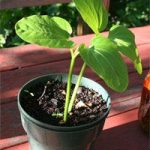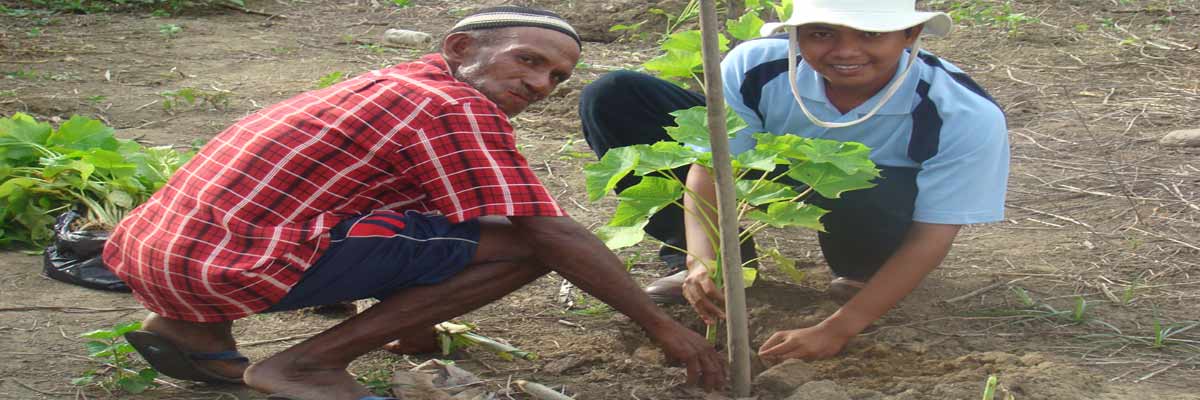Continental Airlines to Test Bio-Fuels
Continental Airlines will test a Boeing 737-800 fueled partially by biofuel on Janurary 7th. This test flight will be powered with a mix of traditional jet fuel and a biofuel made from algae and jatropha plants. This will be the first biofuel-powered demonstration flight of a U.S. commercial airliner.
Not sure what jatropha is? Check out Michael’s post on jatropha here.
Tapping Trees For Diesel Fuel
Australian farmers are embarking on a bit of an experiment to see whether or not they can self-sustain their production using diesel-producing trees. As some may know, I have a bit of a love-affair with plants that can produce — in one way or another — biodiesel. For those looking for an update to my “Adventures In Sustainability” series growing Jatropha — it’s coming soon. The plant is currently in hibernation. But I digress…
The diesel-producing trees are called Copaifera langsdorfii and are native to the Brazilian rainforest. The world has known of their unique properties since about the seventeenth century, but it’s only been recently that harvesting of the petrol is being planned on a grand scale. From the article,
Adventures In Sustainability: Grow My Little Jatropha, Grow
Well, it’s been over two months since I started my little Jatropha experiment and I thought I would chime in on how things are coming. First of all, Jatropha is incredibly easy to grow. I had a delay of about three weeks with my initial seeds since most of it was “old” Jat seed according to some growers and stymied my efforts. In desperation to up the odds, I planted about 20 seeds into one container and was finally rewarded with about six plants. After a few weeks, I transferred two of the strongest plants to a larger container and they’ve taken off in their new home. Surprisingly, the other four plants are doing fine (albeit with not as dramatic growth) and continue to increase in foliage.
 Since I’ve had some time to spend growing this plant, I’ve also discovered some interesting facts. For instance, this is a deciduous tree. I’ve always heard it referred to as a ‘weed’ but this may be because it has an easy time adapting to poor soil conditions, droughts, and can survive almost anywhere it stay relatively above 32 degrees Fahrenheit. Also, Jatropha can grow 8-10 meters tall under the right conditions. Once it drops its leaves and flowers, the seeds will follow shortly afterwards and then mature three months later. It’s at this point that we can attempt some biofuel extraction.
Since I’ve had some time to spend growing this plant, I’ve also discovered some interesting facts. For instance, this is a deciduous tree. I’ve always heard it referred to as a ‘weed’ but this may be because it has an easy time adapting to poor soil conditions, droughts, and can survive almost anywhere it stay relatively above 32 degrees Fahrenheit. Also, Jatropha can grow 8-10 meters tall under the right conditions. Once it drops its leaves and flowers, the seeds will follow shortly afterwards and then mature three months later. It’s at this point that we can attempt some biofuel extraction.
“Powered By 100% Vegetable Oil” Bumper Sticker Triggers $1K Fine!
Today’s world of “choice” for what you can use to power your vehicle may in fact cost you lots of money. As one man found out in Charlotte, NC simply promoting your independence from oil can cost you thousands of dollars. From the article,
“Bob Teixeira decided it was time to take a stand against U.S. dependence on foreign oil.
So last fall the Charlotte musician and guitar instructor spent $1,200 to convert his 1981 diesel Mercedes to run on vegetable oil. He bought soybean oil in 5-gallon jugs at Costco, spending about 30 percent more than diesel would cost. His reward, from a state that heavily promotes alternative fuels: a $1,000 fine last month for not paying motor fuel taxes.
He’s been told to expect another $1,000 fine from the federal government. And to legally use veggie oil, state officials told him, he would have to first post a $2,500 bond.”









